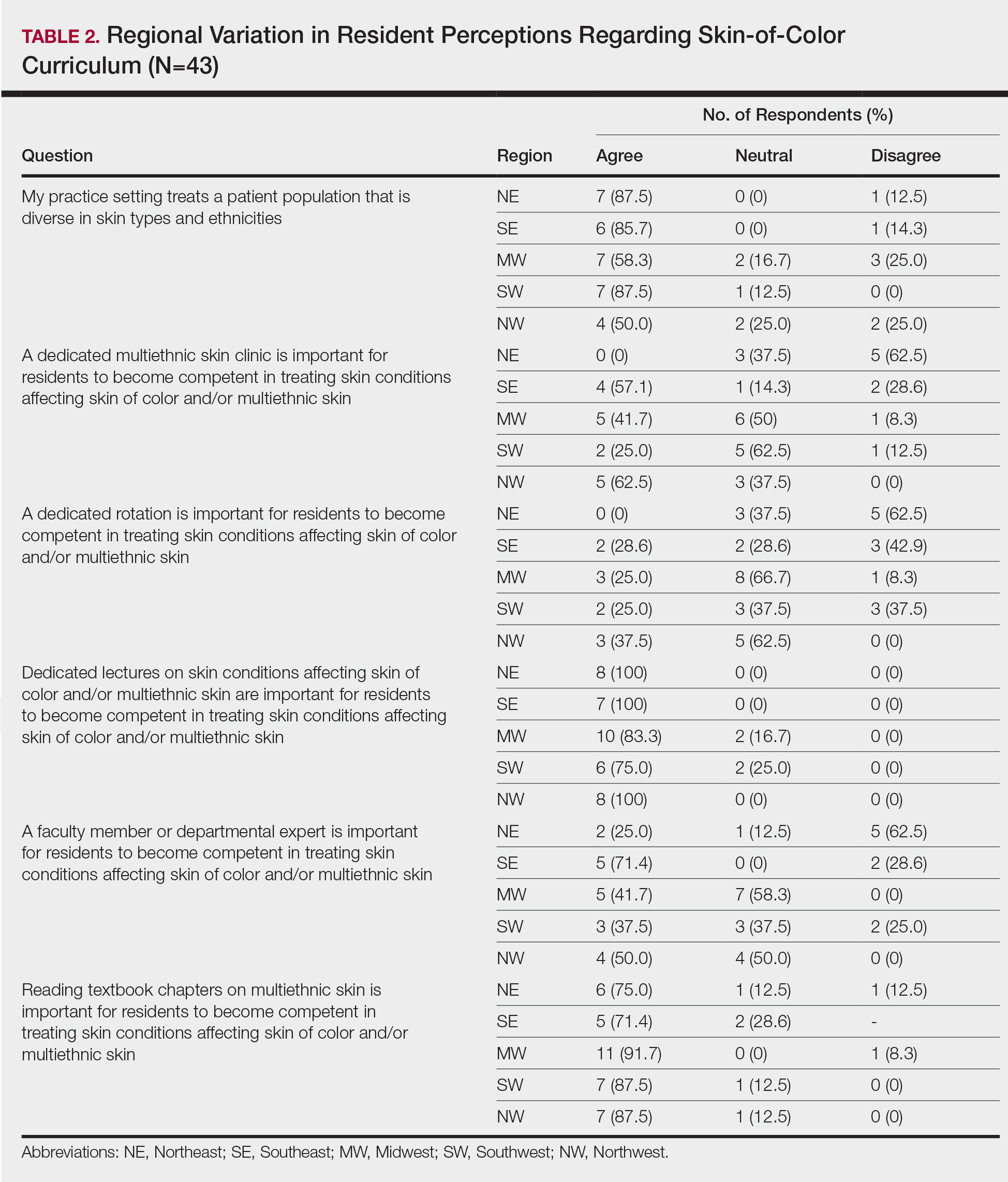Dermatologic treatment of patients with skin of color offers specific challenges. Studies have reported structural, morphologic, and physiologic distinctions among different ethnic groups,1 which may account for distinct clinical presentations of skin disease seen in patients with skin of color. Patients with skin of color are at increased risk for specific dermatologic conditions, such as postinflammatory hyperpigmentation, keloid development, and central centrifugal cicatricial alopecia.2,3 Furthermore, although skin cancer is less prevalent in patients with skin of color, it often presents at a more advanced stage and with a worse prognosis compared to white patients.4
Individuals with skin of color make up the majority of the world’s population and a rapidly expanding portion of the US population. By the year 2044, more than half of all Americans are projected to belong to an ethnic group that is currently a minority. By 2060, the population of citizens identifying with 2 or more races will increase by 226%, the Asian population is projected to grow by 128%, the Hispanic population will increase by 115%, and the black population will increase by 42%.5 The racial and ethnic composition of the United States is evolving, and dermatologic care must evolve accordingly to address patients’ unique concerns. It is essential for future dermatologists to be knowledgeable about dermatologic conditions presenting in patients of various ethnic backgrounds.
Prior studies have demonstrated the need for increased exposure, education, and training in diseases pertaining to skin of color in US dermatology residency programs.6-8 The aim of this study was to assess if dermatologists in-training feel that their residency curriculum sufficiently educates them on the needs of patients with skin of color.
Methods
A 10-question anonymous survey was emailed to 109 dermatology residency programs to evaluate the attitudes of dermatology residents about their exposure to patients with skin of color and their skin-of-color curriculum. The study included individuals 18 years or older who were current residents in a dermatology program accredited by the Accreditation Council for Graduate Medical Education. Responses were measured on a 1 to 3 Likert scale, ranging from agree, neutral, and disagree. Data were analyzed using the Fisher exact test, and the statistical significance was set at P<.05.
Results
Forty-three dermatology residents completed the survey. Respondents self-selected their regions, with 8 (19%) from the Northeast (NE), 7 (16%) from the Southeast (SE), 12 (28%) from the Midwest (MW), 8 (19%) from the Southwest (SW), and 8 (18%) from the Northwest (NW)(Table 1). Overall, 31 (72%) respondents agreed that their practice treats a diverse patient population. Respondents who agreed most often were from the NE, SE, and SW. Less than two-thirds of respondents from the MW agreed, and only half of respondents from the NW agreed (Table 2). Although 37% of all respondents agreed that a dedicated multiethnic skin clinic is important for residents, 5 (63%) NE residents disagreed with this statement compared to 5 (42%) MW residents and 5 (63%) NW residents who agreed (P<.005). Overall, 39 (91%) respondents agreed that dedicated lectures on skin conditions in skin of color patients are important to gain competence in treating patients. Only 4 respondents were neutral to this question, 2 (17%) MW residents and 2 (25%) SW residents. When asked if reading textbook chapters on multiethnic skin is important to gain competence, 36 (83%) respondents agreed. Two respondents disagreed, 1 (13%) from the NE and 1 (8%) from the MW. Overall, 23% of respondents agreed that a rotation dedicated to skin of color is important to build competency. There was a significant difference in responses between the NE and MW (P=.032) and between the NE and NW (P=.019). Furthermore, 19 (44%) respondents agreed that having a faculty member or departmental expert is important for residents to gain competence in treating conditions affecting skin of color. Again, there was a significant difference in responses between the NE and MW (P=.003) and between the SE and MW (P=.009).



